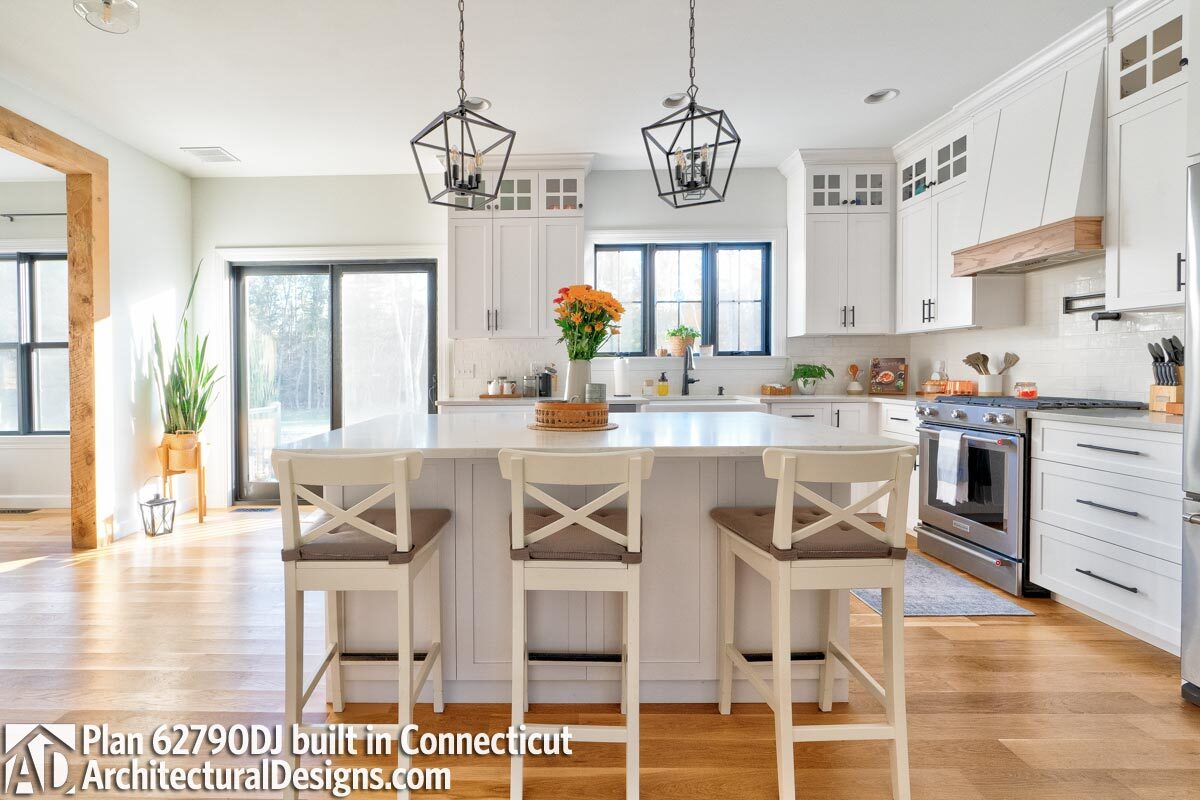Tips to Save Money When Building a Home

When planning a budget to build a custom home, it can seem like the only way to do it right is to break the bank. If you’ve never built before, or you don’t spend a ton of time bingeing DIY network or HGTV to figure out thrifty money-saving hacks, it can be confusing to narrow down when you should splurge versus save on your home build. Here are some of our favorite money saving tips to keep in mind if you’re thinking about building a new home.
1) Purchase Land Wisely
When choosing land, be sure to have an idea of the foundation type you intend to build before you purchase a lot. Site prep and grading can be very costly, so you’ll want a piece of land that will require a minimal amount of alterations to suit your foundation. When building on a slab, you’ll typically want a flatter lot than if you were to build on a basement.
2) Consider Using a Stock House Plan
Stock house plans are a great way to save money early in the build process. Having a custom plan designed from scratch can be very costly. According to the NAHB, “Custom designs cost more in design time, materials and labor”. Working with a professional stock plan company will ensure that you are purchasing a design created by a reputable architect. Stock plans can also be modified to suit your individual needs, which is a great way to achieve a custom floor plan without paying a premium for a from-scratch custom design.
3) Look for Second-hand Materials
Most people consider second-hand or thrift shopping to only be appropriate for furniture or clothing. But with a little bit of patience, you can often find high quality materials at a fraction of the cost. Things like doors can be very costly to order new, your local second hand stores or antique markets can be a great place to find unique or reclaimed pieces. We’ve even had clients find virtually brand new appliances on Facebook Marketplace being offered at a steep discount. Places like Habitat for Humanity ReStore often receive quality donations of things like tile, hardware, doors, windows and other building materials that can help you save some money on your build. If you’re not looking at second-hand materials, be sure to shop around for the best price before you order!
4) DIY the Finishing Touches
Some of the more DIY-friendly steps of the building process can end up making a huge dent in your budget (we’re looking at you, painting). If you’re willing to take on a project or two yourself, you might want to consider asking your contractor to hold off on the finishing touches of your build. Interior painting, landscaping, or even laying certain types of flooring are DIY-friendly projects for the more handy homeowner that can end up saving you a lot of money.
5) Being Your Own Contractor = Not Always Cheaper
There are a lot of factors you should consider if you’re thinking about being your own GC. While it can definitely be a great option for some, it won’t necessarily save you money. According to the NAHB, you may end up paying more for insurance, as companies will see you as a greater risk. Sub-contractors also may adjust their pricing when working with an individual versus a builder they have a business relationship with. If you don’t have a well-rounded knowledge of the building process, you may also run into more mistakes that can be costly to fix. This said, when done correctly, being your own GC can end up saving you money on labor costs. If you’re thinking about being your own GC, be sure to check out our top tips to consider when planning your build.













